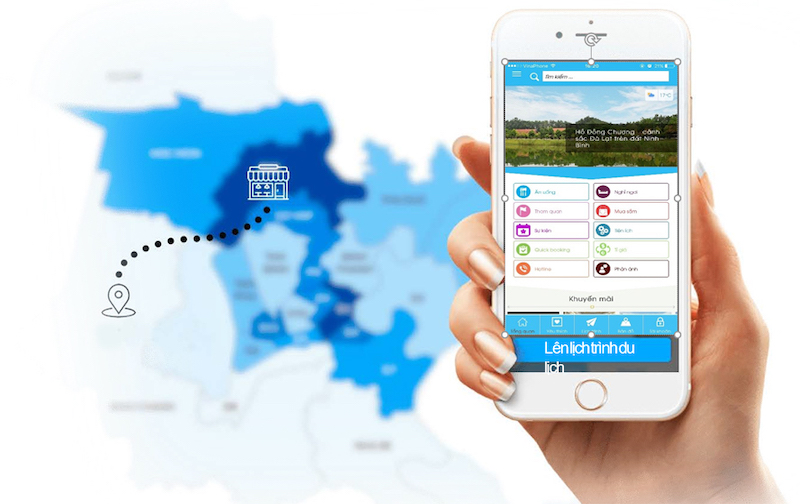To be smart city, Hanoi is already well on its digital transformation way: McKinsey
Ani Bhalekar, expert associate partner, Singapore, and vice president for Internet of Things (IoT) Practice at McKinsey & Company, shares with Hanoitimes his views about Hanoi’s goal of becoming a smart city.
In line with Vietnam’s endeavor to become a digital country by 2030, Hanoi has targeted to be a smart city in healthcare, education, transport and tourism. What do you think about the fields chosen?
| Ani Bhalekar, expert associate partner, Singapore, and vice president for Internet of Things (IoT) Practice at McKinsey & Company |
Digitizing these sectors in a strategic and responsible way can help cities significantly improve their citizens’ quality of life. A McKinsey research on smart cities in Southeast Asia found that:
Smart healthcare solutions could reduce the region’s disease burden by 12 million disability-adjusted life years – in other words, not only extending overall life expectancy but adding years of good health.
Smart mobility solutions could avert 4,900-5,000 unnatural deaths annually and save up to 8 million man-years in annual commuting time for the region.
Cities whose economies are dominated by tourism will definitely benefit from technology applications that support the future of sustainable tourism planning.
By creating more efficient and productive environments for business and hiring, including using technology to enable personalized education and conduct online retraining programs, Southeast Asia could gain almost 1.5 million jobs.
In addition, cities could look into energy and real estate sectors to make its built environment smarter. Smart solutions for the built environment can create more than US$25 billion in value across Southeast Asia, as businesses benefit from reduced capital and operating costs, and society benefit from energy shift to renewables.
Solutions can include using modern construction approaches for higher productivity, using data to build cheaply and quickly without compromising environmental impact.
That said, prioritization is key to successful digital transformations and Hanoi is already well on its way.
| Hanoi's tourism is one of four major fields towards digital transformation. Photo: VNAT |
In which field do you see the capital city has attained concrete results towards the goal?
There are various activities undergoing across all four fields in Vietnam and in Southeast Asia. The opportunity for Hanoi is to learn from different implementations, for example:
The pilot model of Vietnam’s first two Operation Centers for Smart Health and Education was put into operation in Ho Chi Minh City earlier this year. The smart health operation center intends to connect and gather data from relevant agencies, hospitals and other health facilities to enable surveillance and also a forecast of diseases. The smart education operation center intends to monitor schools, track training and create an online ecosystem for teaching and researching.
The latest 2020 Smart City Index by Swiss International Institute for Management Development and the Singapore University of Technology and Design found that air pollution, road congestion and security are the biggest problems in Hanoi and Ho Chi Minh City. This indicates that there is still work to be done in transport and tourism fields.
Hanoi should track these developments very closely and learn from local and regional deployments to leapfrog its own smart city development curve across these four fields.
With such a plan, how would Hanoi catch up with global trends for its further growth?
Digital in general and smart-city projects in particular could benefit from ecosystem that fosters collaboration. What this means is that no single organization could build smart cities alone.
Creative and collaborative partnerships involving governments, private-sector companies, social-sector institutions, and the public alike will create better solutions and value. Various stakeholders can bring different things to the table, whether it is financing, urban planning experience, technical expertise, operational capabilities, or knowledge of the local landscape.
Ecosystem such as the ASEAN Smart Cities Network enable setting industry standards, sharing best practices and boosting more innovative solutions – all of which could enable the entire industry catch up with global trends and developments.
What role would the private sector play in addressing challenges that the city is facing to materialize its goal?
While it is natural for government to play a leading role in putting enabling infrastructure and policies in place for a smart city projects, successful smart city designs and developments are results of effective public-private-social-public partnerships.
As implementing most of the smart city applications we’ve examined would fall to the public sector, the majority of initial investment could come from private actors.
In order to partner with cities and operate effectively there, companies will need to adopt the mindset of serving people, not just a market. Companies will need to take part in three imperatives in shaping the smart city journey:
Plan: amidst a competition between large multinationals and local champions, companies need to design technological capabilities that tailor solutions to a specific city’s context. Companies will need to balance each city’s desire for custom solutions with the reality that a certain level of scale is needed to build a solid business case.
Provide: companies can play a critical role in helping government steer toward solutions that can make a visible difference in their constituents’ lives. Simple and scalable solutions tend to gain traction and users, enhancing value for citizens and solution providers alike.
Partner: a smart city ecosystem requires not only cooperation but also technical compatibility. Companies need to become more open to partnering with players from other industries. Some manufacture smart city products or components, while others provide digital platforms, integrate systems, or even orchestrate activity across the broader ecosystem with a network of partners. Forming alliances, setting industry standards, and shifting towards open interfaces may help the entire industry move forward.
The onus of capital influx lies between public and private entities, hence it is important to articulate commitments and return of investments (ROI) between both entities.
| Hanoi aims to become a smart city by 2030 |
What trends would foreign investors be interested in the city’s plan?
We observed that notable smart-city investments on the global scale are being done across these four trends. To capture opportunities, Hanoi could incorporate these elements into its smart city planning.
Sustainability. Sustainability is rising on the corporate agenda across the construction value chain. For example, in September 2019, an UN-backed asset owner alliance committed to drive portfolio companies to carbon neutrality by 2050. Lockdown of cities, brought upon the Covid-19 pandemic, shows the importance of using technologies to build cities resilience to health and climate risk.
For example, the next generation of buildings could be both energy efficient and smart in their design, which will mitigate the risk of viral infections even as they give back power to the grid.
Shift to renewables. Mainstream investors are targeting clean energy more actively. For example, BlackRock now has a multi-billion-dollar fund focused on energy storage. Our recent research on climate risk in Asia found that the region is already leading the world in renewable energy investment. A next area of opportunity is infrastructure, both physical and digital. The ADB finds that Developing Asia will need to invest US$1.7 trillion annually up to 2030 to maintain its growth momentum, tackle poverty, and respond to climate change. Decisions relating to infrastructure, therefore, will make a huge difference to the emissions pathway globally.
Creative usage of spaces, especially in designing office centers. Companies competed intensely for prime office space in major urban centers around the world, and many focused-on solutions that were seen to promote collaboration. Densification, open-office designs, hoteling, and co-working are amongst the most paramount solutions.
Government support. Public sector could maintain effort in creating an attractive and stable environment for investors, and provide committed team and support. Some cities, Hanoi included, actively cultivate the ecosystem approach by creating consortia, partnerships, and even physical collaboration spaces.
Thank you for your sharing!














